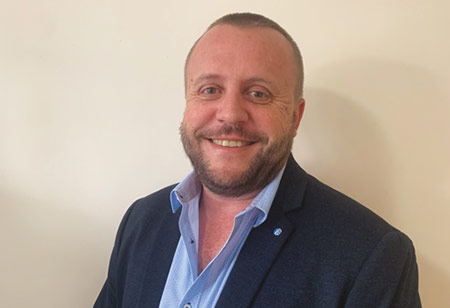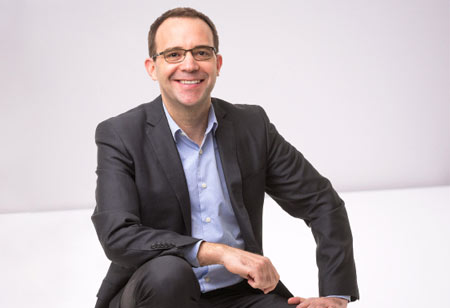THANK YOU FOR SUBSCRIBING
By Adeniyi A. Odugbemi, Global Director - Food Safety and Food Defense, at ADM
Potential Solutions to Human Error: Lessons Learned from...
By Karine Fortin, Quality Director - St-Hyacinthe (Qc) Canada, Barry Callebaut Group
Following GMP is Necessary for Food Safety
By Sarah Engstrom, R&D Manager, Grande Custom Ingredients Group
Impact of Sodium-Based Food Preservatives
By Steve Buryk, Senior Director, Strategy & Operations, Olo [NYSE: OLO]
In a Downturn, Don't Neglect Direct Ordering

Navigating the Digital Transformation: Harnessing the Power of Digital Manufacturing and Integration
Gary Kraversky, PMP, Director, Digital Manufacturing – Product owner, The Kraft Heinz Company.

 Gary Kraversky, PMP, Director, Digital Manufacturing – Product owner, The Kraft Heinz Company.
Gary Kraversky, PMP, Director, Digital Manufacturing – Product owner, The Kraft Heinz Company. Gary Kraversky is a highly skilled IT leader with over two decades of hands-on experience empowering and directing technical and business teams to achieve business goals and financial objectives. Recognized as a functional IT leader with a natural ability to engage at all levels to drive technological change and business transformation, Gary is the Director of The Kraft Heinz Company, where he is responsible for the digital analytics and transformation of 30+ manufacturing sites across the U.S. and Canada.
Please tell readers about your journey and key organizational roles and responsibilities.
My journey in the industry has been long and exciting. I started my career in the organization as an IT Developer. I used my experience in business and technology to support the sales team by creating reporting solutions and assisting sales functions. Later, I joined IT marketing function, where we designed and developed a number of marketing analytics products to drive better decision making. As part of the global IT Finance organization, I lead a global team of IT experts and was responsible for deploying financial consolidation system across our global network. Later, there were multiple IT technical and functional lead roles, including Kraft and Heinz B2B integration, global deployment of Ariba Network and Contract Management platforms, onboarding new and existing manufacturing sites on the SAP ERP platform, and enabling our shop floor teams with digital capabilities.
In my current role as the Director and Digital Manufacturing Product Owner I have a number of products my organization is developing and scaling up as part of our portfolio. I work closely with my business partners to define their needs, develop roadmaps, and align on business values. Manufacturing operations is a complex subject. My goal is to develop my team’s knowledge and functional expertise by taking them to production sites to meet with plant managers, continuous improvement leads, plant maintenance and quality managers, and touring the shop floors where the Kraft Heinz iconic brans are made.My role is central to the digital manufacturing transformation the Kraft Heinz company is undergoing. My digital POD is responsible for providing analytics solutions to drive quick decision making for the entire North America manufacturing operations organization, from the top floor to the shop floor.
“My role is central to the digital manufacturing transformation thatKraft Heinz Company is presently undergoing. My POD is responsible for providing analytics solutions to drive quick decision making for the entire North America manufacturing operations organization, from the top floor to the shop floor.”
What are current trends that you observe in the market today?
Organizations are leveraging various technologies to support the digitalization of manufacturing processes and procedures. Using videos to train new operators quickly is a great way to ensure they understand the processes and procedures that must be followed on the shop floor. We also use tablets and mobile apps to digitize work activities, eliminate paperwork, ingest real-time data, and improve operational performance visibility across the organization. Providing shop floor operatorswith the ability to interact with each other andopen support requests or maintenance orders through mobile devices greatly improvesways of working and streamlines processes.
Our team creates an integrated and digitalized manufacturing environment that leverages technology to improve efficiency, communication, and collaboration across the entire organization.
What would you advise your fellow peers or someone trying to embark on the same journey?
My advice to my peers or someone in the same boat is that they must know the end goal of the venture. Once you have a clear vision of your end goal and have identified the gaps in your current technology and processes, you can start to define the specific steps you need to take to achieve your goals. This includes identifying technology and tools you need to implement, determining who will be responsible for each step, and setting timelines for completion.
It's also critical to consider the costs and return on investment (ROI) of each step of the process, and any potential risks or challenges that may arise. By including all of these factors in your planning, you can create a comprehensive roadmap that will guide your digital transformation journey and help ensure you get the most out of your investment.
Also, having a clear, consistent, and good communication plan keeps all stakeholders informed and aligned with the goals and progress.
Finally, remember that digital transformation is an ongoing process, and it is essential to monitor progress and make adjustments as needed to ensure that your organization stays ahead of the curve and achieves its desired outcomes.
Read Also





![Steve Buryk, Senior Director, Strategy & Operations, Olo [NYSE: OLO] In a Downturn, Don't Neglect Direct Ordering](https://www.fbtechrevieweurope.com/newstransfer/upload/370x420_X257.jpg)









